Intro
Discover what CBC stands for in medical terms, including complete blood count, blood test analysis, and diagnosis of various health conditions, such as anemia and infection.
The medical field is filled with acronyms and abbreviations that can be confusing for those not familiar with them. One such acronym is CBC, which stands for Complete Blood Count. A Complete Blood Count is a common blood test that is used to evaluate the overall health of an individual. It is a crucial diagnostic tool that provides valuable information about the different components of blood, including red blood cells, white blood cells, and platelets.
The importance of a Complete Blood Count cannot be overstated. It is a test that is often used to diagnose and monitor a wide range of medical conditions, including anemia, infection, and blood disorders. The test is also used to evaluate the effectiveness of treatments and to monitor the progression of diseases. In addition, a Complete Blood Count can help healthcare providers to identify potential health problems early on, which can improve treatment outcomes and reduce the risk of complications.
A Complete Blood Count is a simple and relatively painless test that involves taking a sample of blood from a vein in the arm. The blood sample is then sent to a laboratory for analysis, where it is examined for various components, including the number and type of red and white blood cells, the amount of hemoglobin, and the platelet count. The results of the test are typically available within a few hours, and they can provide healthcare providers with a wealth of information about an individual's health.
What Is Included In A Complete Blood Count
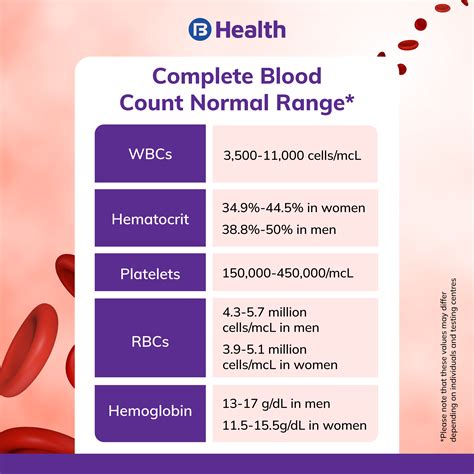
A Complete Blood Count includes several different components, each of which provides valuable information about an individual's health. The test typically includes the following components:
- Red blood cell count: This measures the number of red blood cells in the blood.
- White blood cell count: This measures the number of white blood cells in the blood.
- Hemoglobin: This measures the amount of hemoglobin in the blood.
- Hematocrit: This measures the proportion of red blood cells in the blood.
- Platelet count: This measures the number of platelets in the blood.
Red Blood Cell Count
The red blood cell count is an important component of a Complete Blood Count. It measures the number of red blood cells in the blood, which can help healthcare providers to diagnose and monitor conditions such as anemia. Anemia is a condition characterized by a lack of red blood cells or a lack of hemoglobin in the blood. It can cause symptoms such as fatigue, weakness, and shortness of breath.Benefits Of A Complete Blood Count
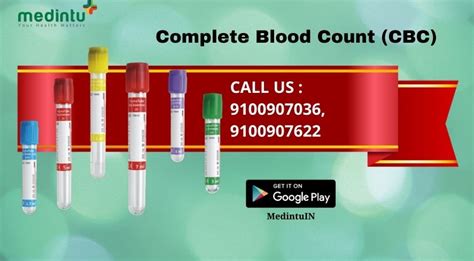
There are several benefits to having a Complete Blood Count. Some of the benefits include:
- Early detection of medical conditions: A Complete Blood Count can help healthcare providers to detect medical conditions such as anemia and infection early on.
- Monitoring of treatments: A Complete Blood Count can be used to monitor the effectiveness of treatments and to adjust them as needed.
- Evaluation of overall health: A Complete Blood Count can provide valuable information about an individual's overall health, which can help healthcare providers to identify potential health problems early on.
Monitoring Of Treatments
A Complete Blood Count can be used to monitor the effectiveness of treatments and to adjust them as needed. For example, if an individual is being treated for anemia, a Complete Blood Count can be used to monitor the response to treatment and to adjust the treatment plan as needed. This can help to improve treatment outcomes and reduce the risk of complications.How Is A Complete Blood Count Performed
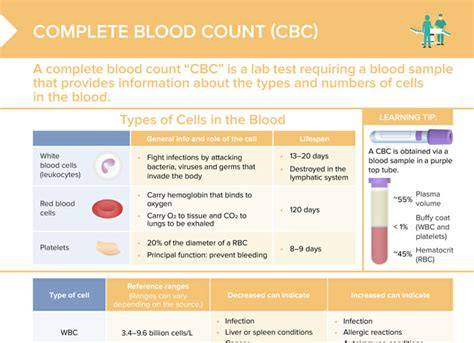
A Complete Blood Count is typically performed in a healthcare provider's office or in a laboratory. The test involves taking a sample of blood from a vein in the arm, which is then sent to a laboratory for analysis. The blood sample is usually taken from the median cubital vein, which is located in the crook of the elbow. The procedure is relatively painless and only takes a few minutes to complete.
Preparation For The Test
There is usually no special preparation required for a Complete Blood Count. However, healthcare providers may recommend that individuals avoid eating or drinking for a certain period of time before the test. This can help to ensure that the results are accurate and reliable.What Do The Results Of A Complete Blood Count Mean
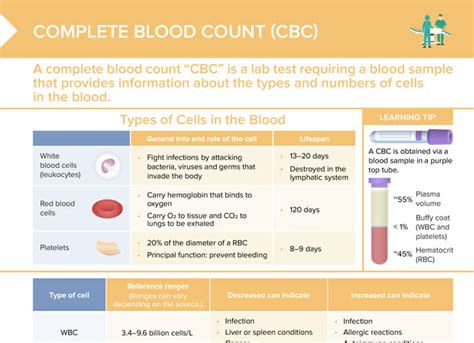
The results of a Complete Blood Count can provide valuable information about an individual's health. The results are typically reported as a series of numbers and percentages, which can be used to diagnose and monitor medical conditions. For example, a low red blood cell count may indicate anemia, while a high white blood cell count may indicate infection.
Interpretation Of Results
The interpretation of the results of a Complete Blood Count requires a healthcare provider's expertise. The results can be influenced by a variety of factors, including the individual's age, sex, and medical history. Healthcare providers use their knowledge and experience to interpret the results and to diagnose and monitor medical conditions.Risks And Complications Of A Complete Blood Count
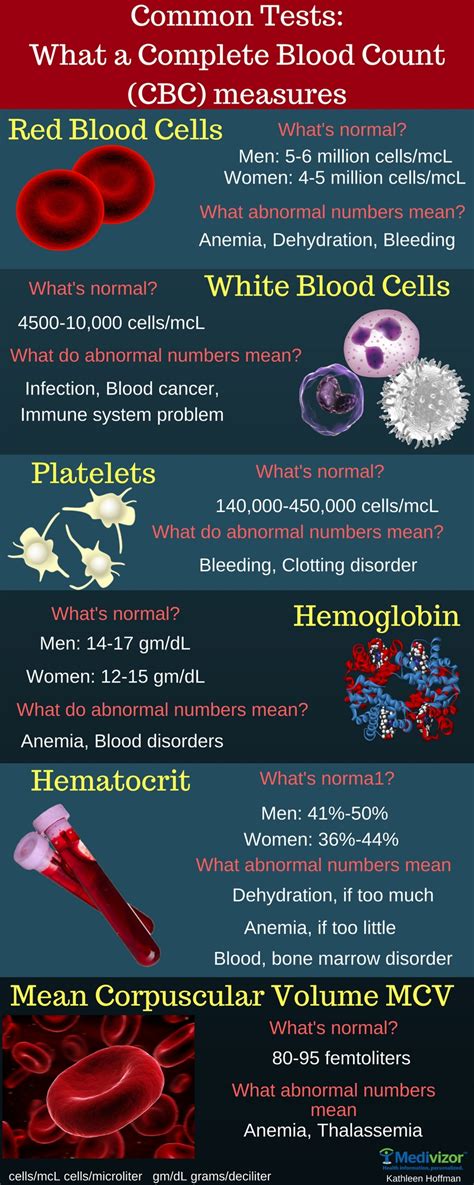
There are few risks and complications associated with a Complete Blood Count. The test is relatively painless and only takes a few minutes to complete. However, some individuals may experience bruising or bleeding at the site where the blood sample was taken. In rare cases, the test may cause infection or nerve damage.
Prevention Of Complications
There are several steps that can be taken to prevent complications associated with a Complete Blood Count. For example, individuals can avoid taking aspirin or other medications that may increase the risk of bleeding. They can also apply pressure to the site where the blood sample was taken to reduce the risk of bruising.Conclusion And Next Steps

In conclusion, a Complete Blood Count is a valuable diagnostic tool that can provide healthcare providers with a wealth of information about an individual's health. The test is relatively painless and only takes a few minutes to complete. It can be used to diagnose and monitor a wide range of medical conditions, including anemia, infection, and blood disorders. If you have any concerns about your health, it is essential to speak with a healthcare provider who can determine if a Complete Blood Count is right for you.
We invite you to share your thoughts and experiences with Complete Blood Counts in the comments section below. Your feedback is valuable to us, and we appreciate your input. If you found this article informative, please share it with others who may benefit from it.
What is a Complete Blood Count?
+A Complete Blood Count is a common blood test that is used to evaluate the overall health of an individual. It measures the number and type of red and white blood cells, the amount of hemoglobin, and the platelet count.
What are the benefits of a Complete Blood Count?
+The benefits of a Complete Blood Count include early detection of medical conditions, monitoring of treatments, and evaluation of overall health. It can help healthcare providers to identify potential health problems early on and improve treatment outcomes.
How is a Complete Blood Count performed?
+A Complete Blood Count is typically performed in a healthcare provider's office or in a laboratory. The test involves taking a sample of blood from a vein in the arm, which is then sent to a laboratory for analysis.
